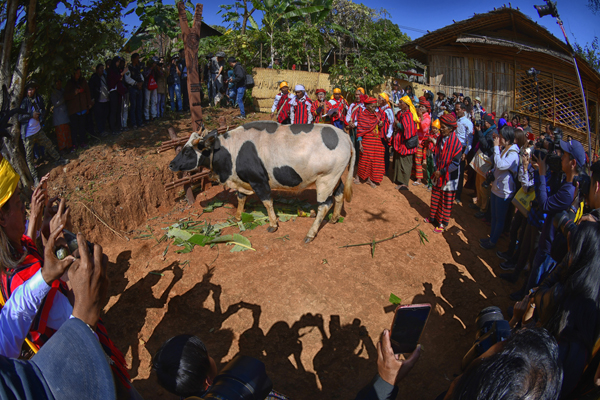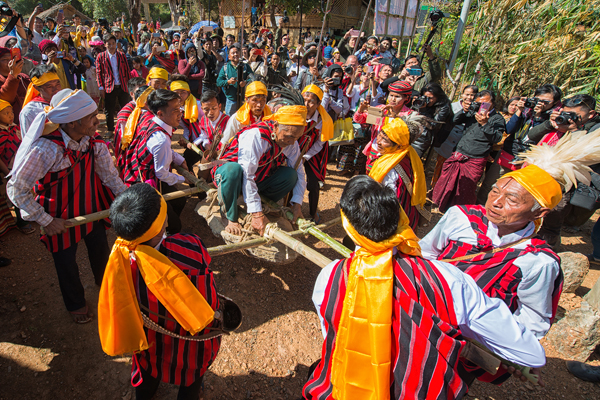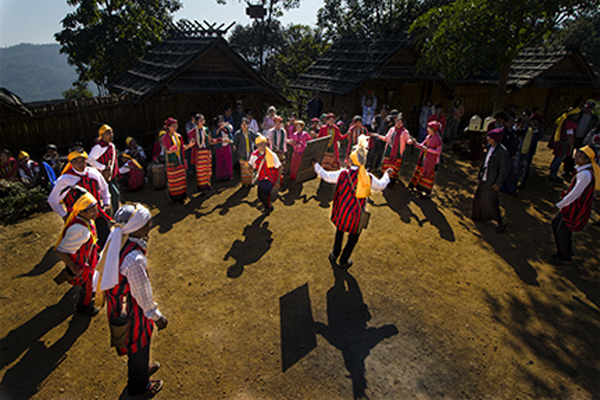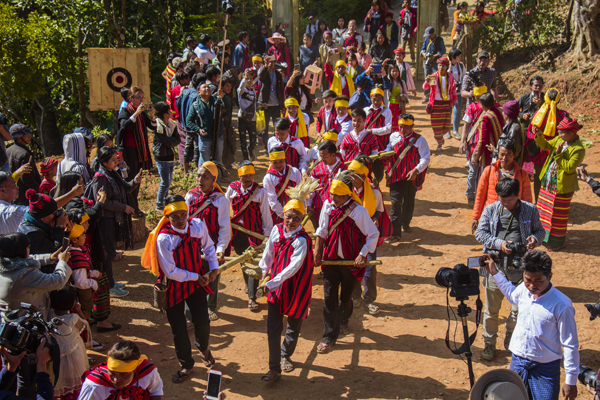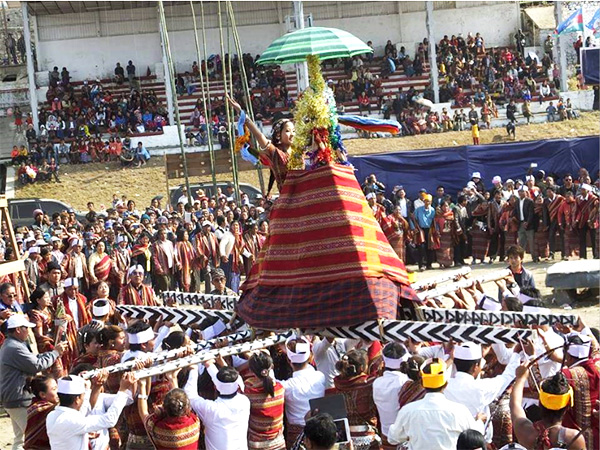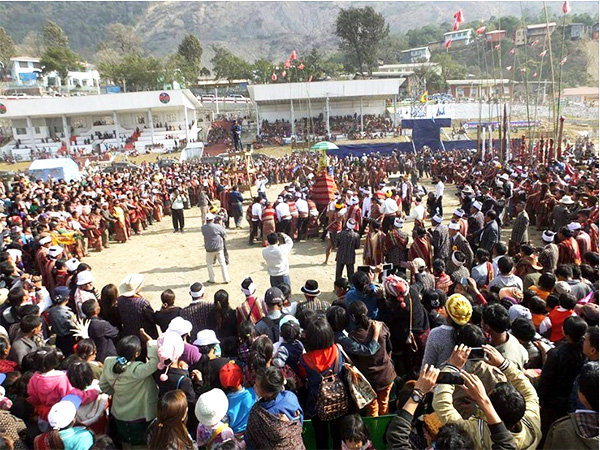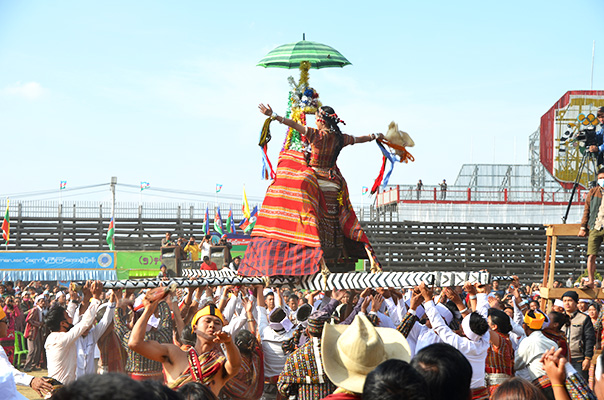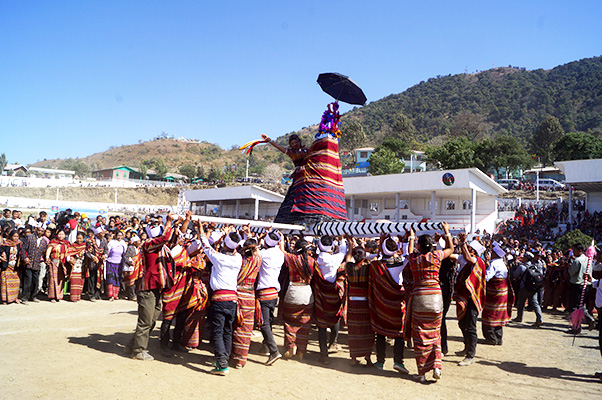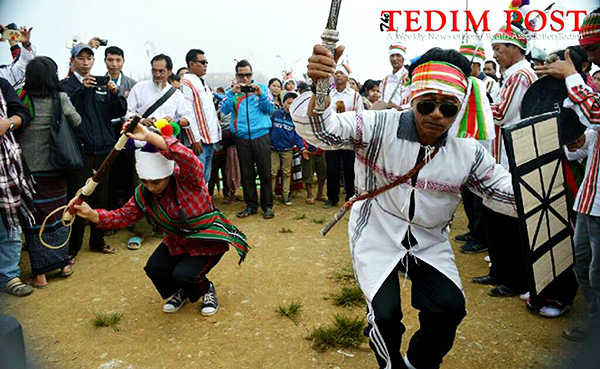ပွဲတော်နှင့်အခမ်းအနားများ
ပွဲတော်နှင့်အခမ်းအနားများ
ပွဲတော်နှင့်အခမ်းအနားများ
လောက်နူးမြေ ရိုးရာယဉ်ကျေးမှုနှင့် ခေါ်နူးစုမ်တောင်ဇလပ်ပန်းပွဲတော်
ဇန်နဝါရီလ

လောက်နူးမြေ ရိုးရာယဉ်ကျေးမှုနှင့် ခေါ်နူးစုမ်တောင်ဇလပ်ပန်းပွဲတော်သည် ချင်းပြည်နယ်၊ ကန်ပက်လက်မြို့၌ ၂၀၂၀ပြည့်နှစ်မှ စတင်၍ တောင်ဇလပ်ပန်းများ မြိုင်မြိုင်ဆိုင်ဆိုင်ပွင့်သည့် ဇန်နဝါရီလတွင် ခရီးသွားလုပ်ငန်း မြှင့်တင်ရေး ပွဲတော်အနေဖြင့်လည်းကောင်း၊ လောက်နူးမြေ (ကန်ပက်လက်) ရိုးရာယဉ်ကျေးမှုဓလေ့ထုံးစံများကို ဖော်ထုတ်ရန် အတွက်လည်းကောင်း၊ ခေါ်နူးစုမ်တောင်နှင့်
သဘာဝပတ်ဝန်းကျင် ထိန်းသိမ်းစောင့်ရှောက်ရေး အတွက်လည်းကောင်း နှစ်စဉ်ကျင်းပသည့်ပွဲတော်
ဖြစ်ပါသည်။ ခရီးသွားဧည့်သည်များအနေဖြင့် ချင်းပြည်နယ် လောက်နူးမြေရိုးရာယဉ်ကျေးမှုနှင့် ခေါ်နူးစုမ် တောင်ဇလပ်ပွဲတော်တွင် လောက်နူးမြေအတွင်းနေထိုင်ကြသည့် ချင်းလူမျိုးစုများ ဖြစ်ကြသော မွင်း၊ ရာ့၊ ဒါးရင်ဒူး၊ ဒိုင်နှင့် ဉ(ပ်)ပူး လူမျိုးများ၏ ရိုးရာအဝတ်အစားများ၊ အသုံးအဆောင်ပစ္စည်းများနှင့် အကအလှများကို ပွဲတော်ကျင်းပသည့် နေရာတွင် မြင်တွေ့ ခံစားနိုင်မည် ဖြစ်ပြီး တမူထူးခြားသော ဒေသထွက် ထောပတ်သီးဟင်းလျာများအပြင် ချင်းရိုးရာ အစားအစာမျိုးစုံကိုလည်း မြည်းစမ်းခွင့် ရရှိမည်ဖြစ်ပါသည်။ သဘာဝကို ချစ်မြတ်နိုးသော၊ တောင်တက်ရတာ ဝါသနာပါသော ခရီးသွားဧည့်သည်များ အနေဖြင့်လည်း ခေါနူးစုမ်တောင်နှင့် တောင်ဇလပ်ပန်းထိန်းသိမ်းစောင့်ရှောက်ခြင်းဆိုင်ရာ ပြခန်း၊ ကဗျာ၊ ဆောင်းပါးနှင့် စာစီစာကုံးများလေ့လာနိုင်မည့်အပြင် မြန်မာနိုင်ငံ၏ အမြင့်ဆုံးမြေသားတောင်ဖြစ်သည့် တောင်တန်းများ၏ မိခင်အဖြစ် တင်စားကြသော ခေါနူးစုမ်တောင်ထိပ်သို့ တောင်ဇလပ်ပန်းရောင်စုံတို့ကို ကြည့်ရင်း ခြေလျင်လမ်းလျှောက်ပြိုင်ပွဲတွင်လည်း ဝင်ရောက်ပါဝင် ဆင်နွှဲနိုင်မည်ဖြစ်ပါသည်။ ထို့အပြင် ချင်းတို့၏ ရိုးရာပွဲတော်များထဲမှ လူသိများသော ရိုးရာလုံယူးကျောက်ပျဉ်ချီပွဲတော်ကို လည်း ဝင်ရောက်ဆင်နွှဲနိုင်မည်ဖြစ်သောကြောင့် ချင်းပြည်နယ်သို့ လာရောက်လည်ပတ်မည့် ခရီးသွားဧည့်သည်များအနေဖြင့် လောက်နူးမြေ ရိုးရာယဉ်ကျေးမှု နှင့် ခေါ်နူးစုမ်တောင်ဇလပ်ပန်းပွဲတော် ကို ပါဝင် ဆင်နွှဲ ကြပါရန် ဖိတ်ခေါ်ရင်း ၂၀၂၀ပြည့်နှစ်တွင် ကျင်းပခဲ့သော လောက်နူးမြေ ရိုးရာယဉ်ကျေးမှု နှင့် ခေါ်နူးစုမ်တောင်ဇလပ်ပန်းပွဲတော်၏ ဓာတ်ပုံတစ်ချို့ကို တင်ဆက်ပေးလိုက်ပါသည်။
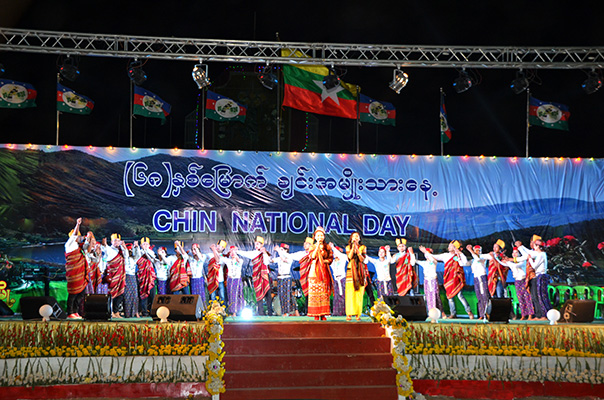
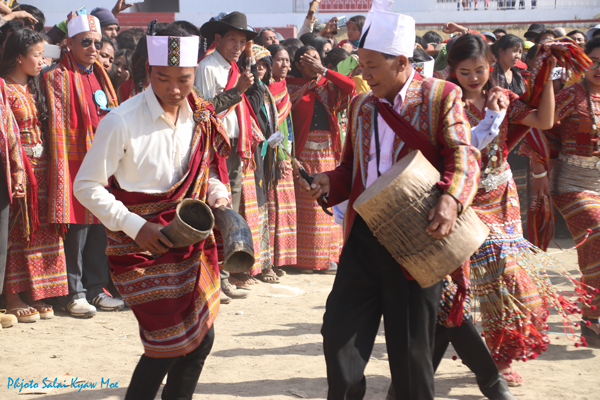
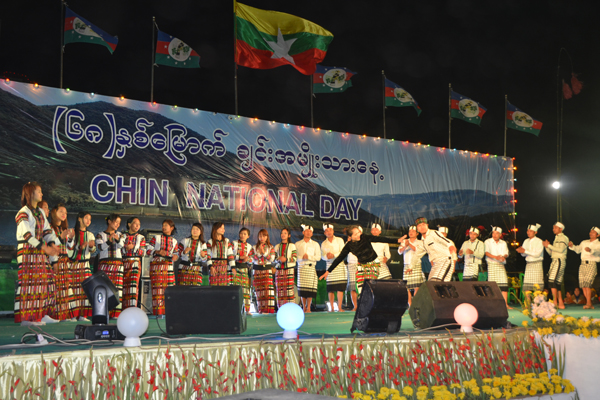
ချင်းအမျိုးသားနေ့ပွဲတော်
ဖေဖော်ဝါရီ (၂၀)ရက်နေ့
ချင်းအမျိုးသားနေ့အား နှစ်စဉ် ဖေဖော်ဝါရီလ (၂၀)ရက်နေ့တွင် ချင်းပြည်နယ်အတွင်းရှိ မြို့နယ် အသီးသီးနှင့် ကမ္ဘာတစ်ဝှမ်းရှိ ချင်းလူမျိုးများရှိရာ နေရာများတွင်လည်း စည်ကား သိုက်မြိုက်စွာ ကျင်းပလျက်ရှိကြပါသည်။ ချင်းလူမျိုးများ၏ စည်းလုံးညီညွတ်မှု ပြသခြင်း၊ ပေါင်းစည်းမှု အင်အားပြသခြင်းစသည့် ရည်ရွယ်ချက်များဖြင့် ကျင်းပကြပါသည်။ ချင်းအမျိုးသားနေ့တွင် ချင်းရိုးရာနပန်းပြိုင်ပွဲနှင့် ခွေါင်ကြွဲပွဲတို့ကိုလည်း ရိုးရာမပျက် ဆင်နွှဲ လေ့ရှိကြပါသည်။ ထို့ပြင် ရိုးရာပြခန်းများ၊ ဒေသဖွံ့ဖြိုးမှုပြခန်းများနှင့် ရိုးရာအစားအစာ ပြခန်းများကိုလည်း ခင်းကျင်းပြသကြပါသည်။
နှစ်သစ်ပွဲတော် (ကုမ်သီပွဲတော်)
ဧပြီလ (၁)ရက်
နှစ်သစ်ပွဲတော်(ကုမ်သီပွဲတော်)သည် နှစ်ဟောင်းမှ နှစ်သစ်ကူးသောအခါတွင် ရောဂါဘေး၊ ဆင်းရဲခြင်း ကင်းဝေးစေရန်အတွက် စိတ်သစ်လူသစ်ဖြင့် မိမိတို့အိမ်တွင် နှစ်သစ်အား ကြိုဆိုသော ပွဲဖြစ်ပါသည်။ ညသန်းခေါင်အကျော်တွင် ကျေးငှက်တိရိစ္ဆာန်များ မသောက်သုံးရသေးသော ရေကို နှစ်သစ်ရေအဖြစ် ခပ်ထားရပြီး မနက်မိုးလင်းချိန်တွင် ထိုနှစ်သစ်ရေဖြင့် ပက်ဖျန်းပြီး ပွဲကျင်းပ ကြပါသည်။ ယခင်တွင် ဧပြီလ ( ၁ ) ရက်မှ ( ၇ ) ရက်ထိပြုလုပ်သော်လည်း ယခုချိန်တွင် ပွဲတော်အား ဧပြီလ(၁)ရက်၌သာ ကျင်းပကြပါသည်။ ပဲယင်းနှင့် နွားနောက်သားခြောက်၊ ဆန်ထမင်းရောပီး ကလေးလူကြီးဝိုင်းဖွဲ့ စားသောက်ကာ ဝိုင်းဖွဲ့ကခုန် ကျပါသည်။
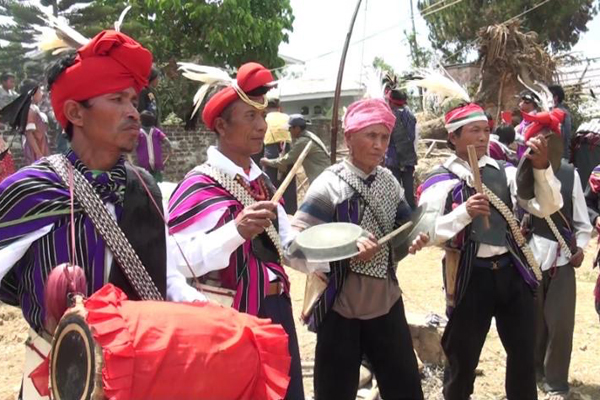
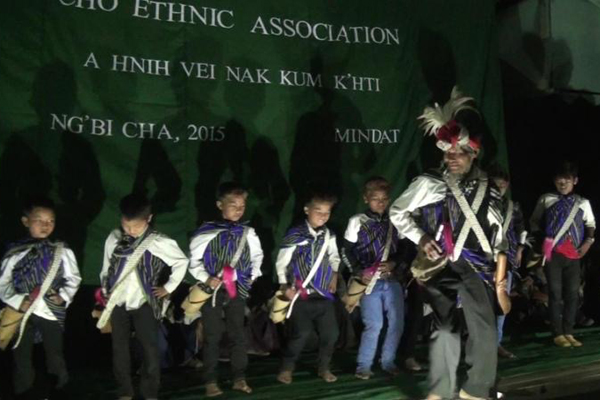
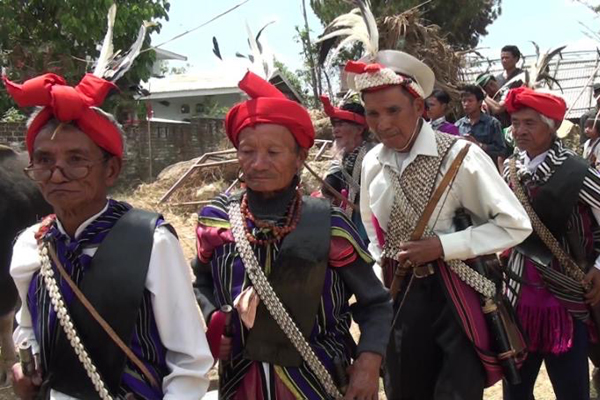
ချင်းရိုးရာခွါဒိုပွဲတော်
အောက်တိုဘာနှင့် နိုဝင်ဘာလဆန်း
ချင်းရိုးရာ ခွါဒိုပွဲတော်အား ချင်းပြည်နယ်၊ မြောက်ပိုင်း တီးတိန်မြို့နယ်တွင် အများအားဖြင့် ကျင်းပလေ့ရှိပါသည်။ တစ်နှစ်တာ တောင်ယာလုပ်ငန်း အောင်မြင်ပြီးစီးသည့် အထိမ်းအမှတ်အဖြစ် သီးနှံအောင်ပွဲခံပွဲတော်ကို ဂုဏ်ယူဝမ်းမြောက်စွာ ကျင်းပရန်၊ ရွာသူရွာသားများ ကျန်းမာချမ်းသာ ပျော်ရွှင်ရေးနှင့် လာမည့်နှစ် ရာသီဉတု မှန်ကန် ကောင်းမွန်ပြီး တောင်ယာသီးနှံများ အောင်မြင်ဖြစ်ထွန်းစေရန်၊ နယ်မြေအေးချမ်း သာယာရေးနှင့် ချစ်ခင်ရင်းနှီးမှုရရှိစေရန်အတွက် နတ်ဆိုးများ နှင်ထုတ်ခြင်း၊ စည်းလုံး ညီညွတ်ခြင်း၊ ဆုတောင်းပွဲများနှင့် ရပ်နီးရပ်ဝေး မိတ်ဆွေများ ပျော်ရွှင်စွာ တွေ့ဆုံ စားသောက်နိုင်ရန် ရည်ရွယ်ပြီး ခွါဒိုပွဲတော်ကို နှစ်စဉ်နှစ်တိုင်း ကောက်သစ်ပေါ်ချိန် အောက်တိုဘာနှင့် နိုဝင်ဘာလဆန်းတို့တွင် ဆင်နွှဲ ကြလျက်ရှိပါသည်။
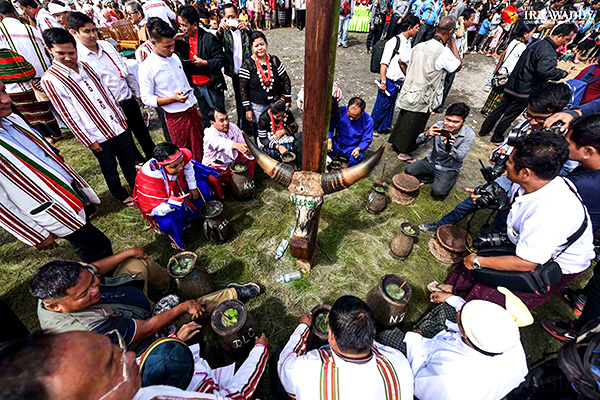
ခွေါင်ကြွဲပွဲ(Khuang Cawi Ni )
ခွေါင်ကြွဲ ( Khuang Cawi ) ဟူသော ဝေါဟာရမှာ ဟားခါး ချင်းမျိုးနွယ်တို့၏ ဘာသာစကား ဖြစ်ပါသည်။ “ခွေါင်” ( Khuang ) ၏ အဓိပ္ပာယ်မှာ တောင်ပို့ဖြစ်ပြီး “ခွေါင်” ( Khuang ) ကို တောင်ပို့ သဏ္ဌာန်ပြုလုပ်ရသော ဝေါစင်တစ်မျိုးဖြစ်ပါသည်။ “ကြွဲ”ဆိုသည်မှာ မြှောက်ချီခြင်းဟု အဓိပ္ပာယ်ရပြီး ခွေါင်ကြွဲ၏အဓိပ္ပာယ်မှာ “ဝေါစင်နှင့်မြှောက်ချီဂုဏ်ပြုပွဲ”ဟု အနက်အဓိပ္ပာယ်ရပါသည်။ ‘ခွေါင်ကြွဲပွဲ’သည် လက်ထပ်ပွဲမဟုတ်ပဲ ပုဂ္ဂိုလ်တစ်ဦး၏ ဇနီး(သို့)သမီး မည်ကဲ့သို့ ချောမောလှပကြောင်း၊ ချစ်မြတ်နိုးကြောင်း ပွဲပြုလုပ်ပြီး ဧည့်ပရိတ်သတ်၊ ဆွေမျိုး၊ လူအများရှေ့တွင် ဂုဏ်ပြုသော ပွဲဖြစ်ပါသည်။ “ခွေါင်ကြွဲပွဲ”ကို နေ့ထူးနေ့မြတ်ဖြစ်သော ချင်းအမျိုးသားနေ့တွင် ပြုလုပ်ကျင်းပလေ့ရှိကြောင်း တွေ့ရ ပါသည်။
ပိုက် ( နပန်းသတ်ပွဲ)
ဆန်၊ ဆပ်ဆန်တို့၏ ဖွဲများကို စုဆောင်းကာ ပုံ၍ မြေနေရာညီညာသော တစ်နေရာတွင် ပိုက် ( နပန်း ) ဘွာလ် ( ကွင်း )ကို သတ်မှတ်ကြပါသည်။ နပန်းဒိုင်သူကြီး ( ကြီးကြပ်သူ ) တစ်ဦးမှ ကွင်းဖွင့်သည့်အနေဖြင့် သော်လည်းကောင်း၊ နတ်ဆိုးများအား နှင်ထုတ်သည့် အနေဖြင့်သော်လည်းကောင်း သေနတ်ပစ်ဖောက်ပါသည်။ သတ်မှတ်ထားသည့် ကွင်းထဲတွင် အမျိုးသမီးနှင့် ခွေးတို့သည် ဝင်ရောက်ဖြတ်သန်းခွင့် မရှိတော့ပါ။ ရံဖန်ရံခါ ဖျားနာခြင်းများသော အချိန်ဖြစ်ပါက သေနတ်ပစ်ဖောက်၍ မဟုတ်ပါက ကြက်ဉကို ရိုက်ခွဲ၍လည်း ကွင်းဖွင့်ခြင်းကို ပြုလုပ်လေ့ရှိပါသည်။ အမျိုးသမီးနှင့် ခွေးတို့သည် ကွင်းဖွင့်အပြီး ကွင်းထဲသို့ ဝင်ရောက်ခဲ့ပါက နပန်းပွဲတွင် ပါဝင်သူများ ခြေလက်တစ်ခုခု ထိခိုက်နိုင်သည်ဟု ယူဆကြ၍ ဝင်ရောက် ဖြတ်သန်းခြင်းအား တားမြစ်ထားရခြင်းဖြစ်ပါသည်။ ခွန်အားကြီး၍ နည်းပညာ ကြွယ်ဝသူများသည် အယောက်၁၀ယောက်ကိုနိုင်ကာ ဗိုလ်စွဲလေ့ရှိကြသည်။ ပိုက်ပွဲတွင် ဗိုလ်စွဲသူသည် ပိုက်ကွင်းတွင် သာမက နေရာတကာတွင် အားကိုးရ၍ မျက်နှာပန်းလှကြပါသည်။ ၎င်းနာမည်ဂုဏ်အား ချင်းလူမျိုးများ တန်ဖိုးထား အမြတ်တနိုးထားကြပါသည်။
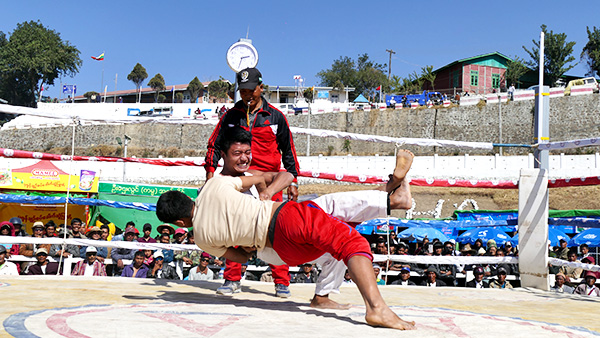
လုံယူးပွဲတော်
‘မွင်း’ရိုးရာ လုံယူးပွဲတော်အား တောင်ယာစပါးရိတ်သိမ်းချိန် ကောက်ရိတ်သိမ်းပွဲတော်အနေဖြင့် တောင်ယာအထွက်ကောင်းသည့် ပုဂ္ဂိုလ်တစ်ဉီးတည်းမှသာ အကုန်ကျခံ ကျင်းပသည့် ပွဲဖြစ်ပြီး ရပ်နီးရပ်ဝေးမှဆွေမျိုးများအား ဖိတ်ခေါ်ကျွေးမွေးသည့် ပွဲဖြစ်ပါသည်။ ပွဲကျင်းပသည့် အလှူရှင် အနေဖြင့်တတ်နိုင်သည့် ပိုင်ဆိုင်မှုအပေါ် မူတည်ပြီး နွားနောက် တစ်ကောင်မှ နွားနောက် ခြောက်ကောင်အထိ ယဇ်ပူဇော်လေ့ရှိပါသည်။ ပွဲလာရောက်သည့် ရပ်နီးရပ်ဝေးမှ ဆွေမျိုးများအနေဖြင့် အနည်းဆုံးခေါင်အိုးတစ်အိုး သယ်ယူလာပြီး ကူညီပံ့ပိုးလေ့ရှိပါသည်။ လုံယူးပွဲကို ယခင်က (၇)ရက်အထိ ကျင်းပခဲ့သော်လည်း ယခုအခါ (၃)ရက်သာ ကျင်းပလေ့ရှိပါသည်။ ပွဲတော်နှင့်အတူ နီးစပ်ရာချောင်းမှ ပွဲနေရာသို့ ကျောက်ဖျာများသယ်ယူခြင်း၊ နတ်ပူဇော်ခြင်း၊ အိမ်ရှင်အား ဂုဏ်ပြုခြင်း အစီအစဉ်များအား ပူးတွဲဆင်နွှဲကြပါသည်။
